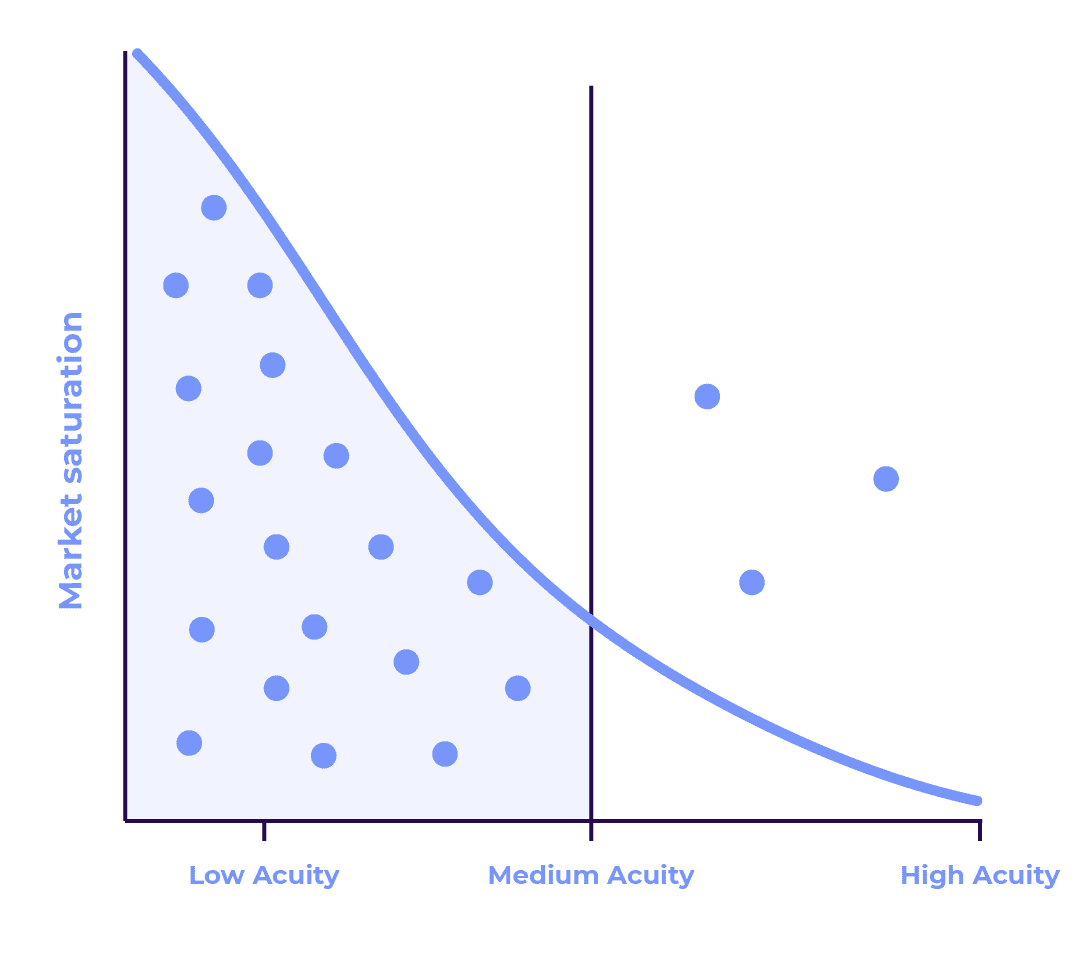The term “wellness” has long been synonymous with “fitness.” In the past, wellness programs were often limited to physical healthcare offerings such as exercise challenges for rewards and wellness incentives (i.e. reduced monthly premiums in exchange for a healthy annual health screening). This approach has created a large divide between employee well-being and company prosperity. Well-being hinges on two important simple concepts— feeling good and functioning well in the world. However, in order to help your employees achieve complete well-being, comprehensive holistic wellness needs to be a priority. This blog explores the topic of full spectrum well-being as it relates to employees, and how companies can initiate comprehensive wellness programs to ultimately decrease total medical spend and absenteeism in the workplace.
Benefits of a holistic wellness program
Among the many long-term benefits of offering a truly comprehensive care program to employees, decreased employee absenteeism and reduced total medical spend are two major indicators of an effective, holistic program.
According to Health Affairs, companies that have launched total wellness programs are seeing high positive returns. For every dollar spent on employee wellness, researchers report that medical costs fall by $3.27, and absenteeism drops by $2.73—a six-to-one return on investment.
Here are a few important statistics that Gallup reported in a study conducted on employees with high levels of well-being and engagement in the workplace:
- Employee satisfaction - 59% less likely to look for a job with a different organization in the next 12 months
- Employee efficacy - 27% more likely to report "excellent" performance by their organization
- Employee retention - 18% less likely to change employers in a 12-month period
The five elements of full spectrum well-being
Although there are variations of definitions for the full spectrum of well-being, here is Cerebral’s approach to the pillars. There are five broad categories that are essential for us, as humans, to feel fulfilled and whole.

- Physical: You have good health, ample energy, and get enough sleep to complete responsibilities done daily
- Social: You have supportive relationships and love in your life
- Occupational: You like what you do each day and are motivated to achieve your goals
- Financial: Your ability to manage economic your life to reduce stress and increase security; common concerns often include debt, paying for childcare and/or education, and retirement
- Mental: You feel comfortable expressing your feelings, you have a healthy resource to relieve stress, and try to maintain a positive attitude even when conflict arises
While all pillars are essential to full spectrum well-being, the mental health pillar is foundational for total health.
The current spectrum of virtual mental healthcare
According to MetLife research, more than half of today’s workers are concerned about their mental health. To address these disparities in mental wellness, organizational leaders will have to trade a one-size-fits-all approach for a diverse collection of resources to meet the various needs of different employees.
In our Beyond the EAP webinar, we discussed the spectrum of mental healthcare based on market saturation. There is little market saturation for mental health care companies that have specialized conditions and customized digital tools configurable to meet unique employee needs, meaning oftentimes, mental health programs that companies offer don’t have solutions beyond low acuity mental health conditions.
Market saturation data exhibit

If your organization prioritizes and focuses on strengthening your mental healthcare program to accommodate for low to high acuity conditions, you’ll see positive returns in the form of employee productivity, efficacy, and satisfaction, in addition to reduced total medical spend. This will broadly impact your holistic program, by addressing the foundational factor – mental health, the root that nurtures the four other elements of full spectrum well-being.
How to evaluate your company’s wellness programs
If you conducted a company-wide poll about your benefits program, how many employees would respond with “I believe that we have a great mental health program”? If you were to dig deeper and look at data on the average usage rate of your current wellness program, how many employees are actively utilizing the mental healthcare benefits you provide?
The truth of the matter is that if your company leverages an EAP, the average usage rate is less than 5%. Why is this? There are combinations of variables that could hinder employees from actively participating in your mental health EAP. And those who do participate have low to medium acuity conditions, as EAP programs cannot adequately treat those with serious mental illness.
More often than not, patients seeking care experience wait times greater than a month to be connected with a provider, and patients who suffer from severe mental illness are referred to a specialist, with additional tacked on wait times. In addition, mental health stigma is still prevalent within both urban and rural populations. Almost 60% of employees have never spoken to anyone at work about their mental health status.
Use this survey template created by our certified therapists to assess your employees’ current mental health struggles and identify opportunities for improvements in your benefits program. Once you have collected at least 10% of the count of employee responses, you can evaluate the current state of mental health within the organization.

Telehealth and the Power to Revolutionize Access to Mental health care

How Telehealth Can Increase Access to Mental Healthcare for College Students

Age Verification and What it Means for Access to Care

Call 911 if you’re having a
mental health emergency
Text Home to 741-741 if you're in emotional
distress and need immediate support
Call or text 988 Suicide &
Crisis Lifeline. Chat service
is available at 988lifeline.org.